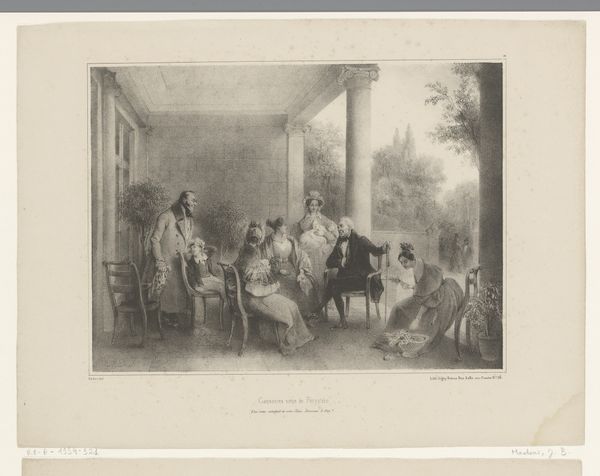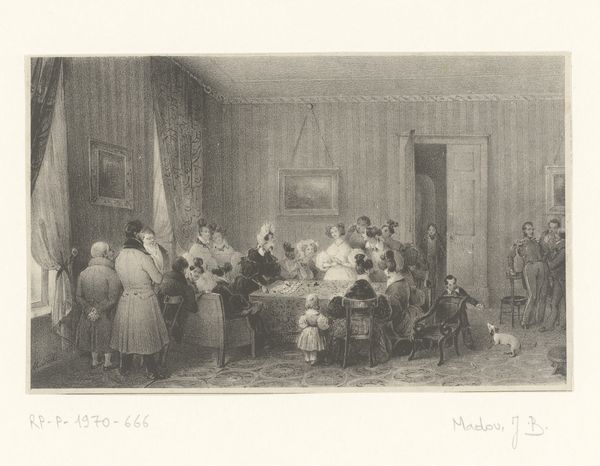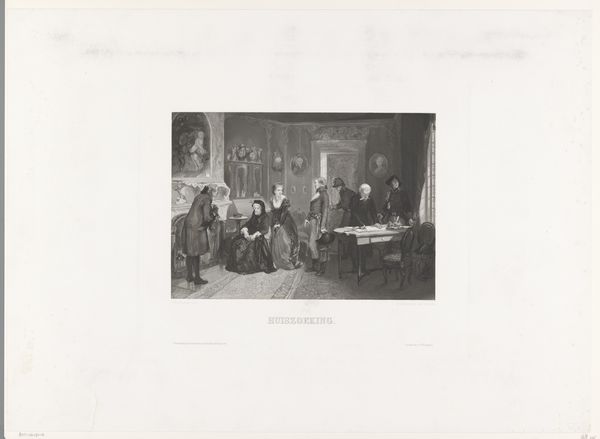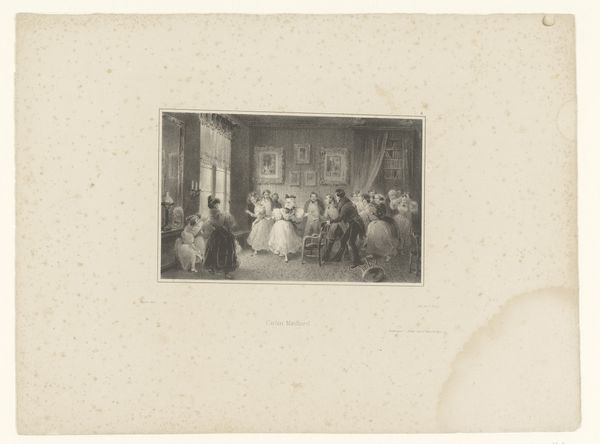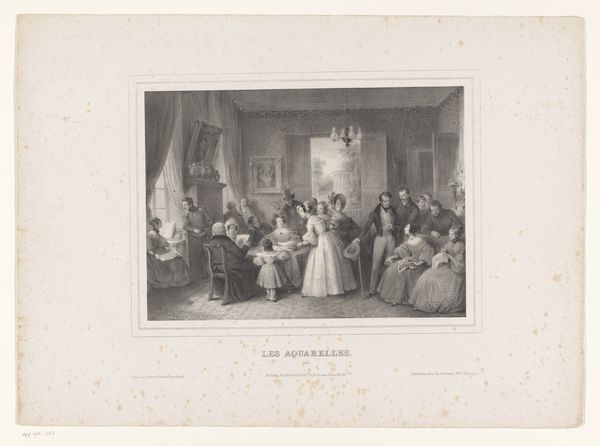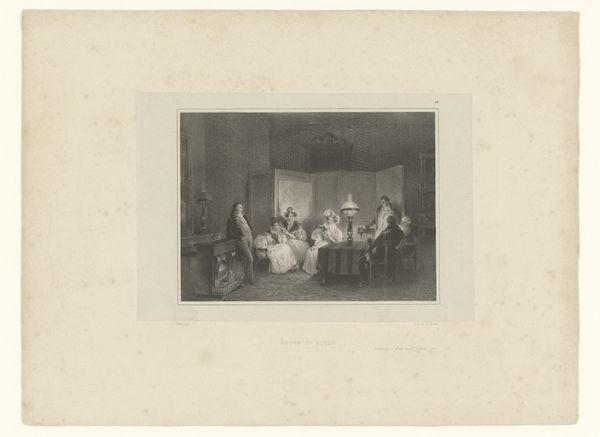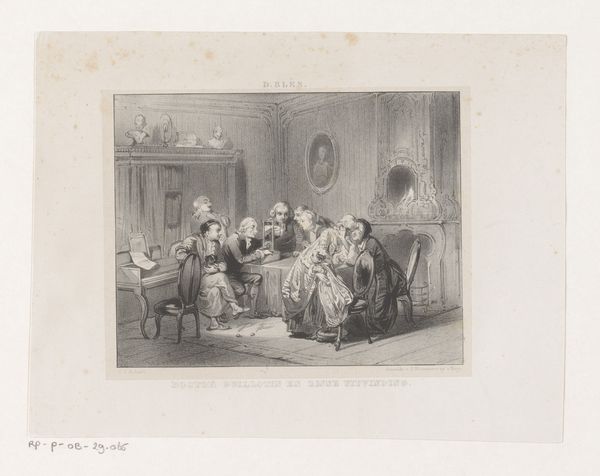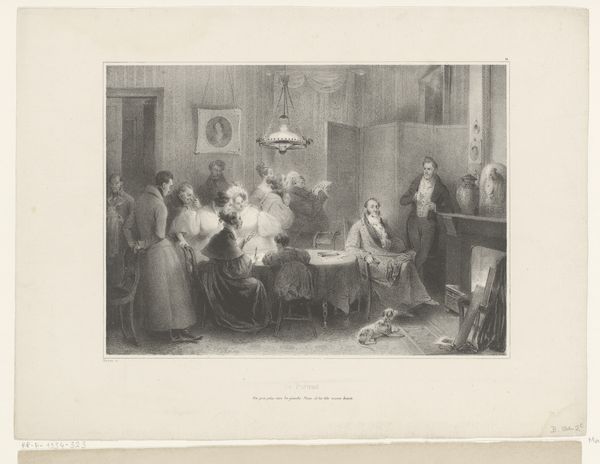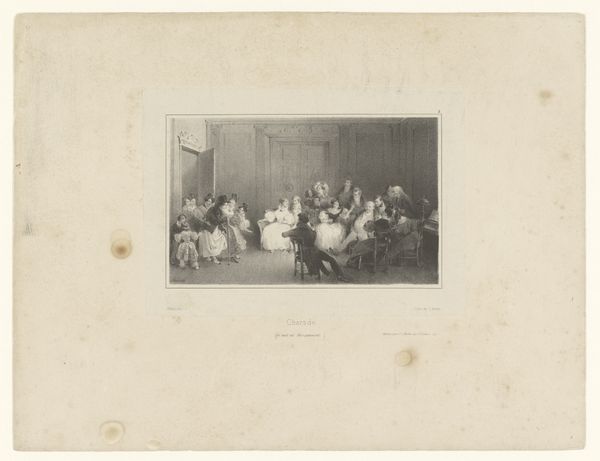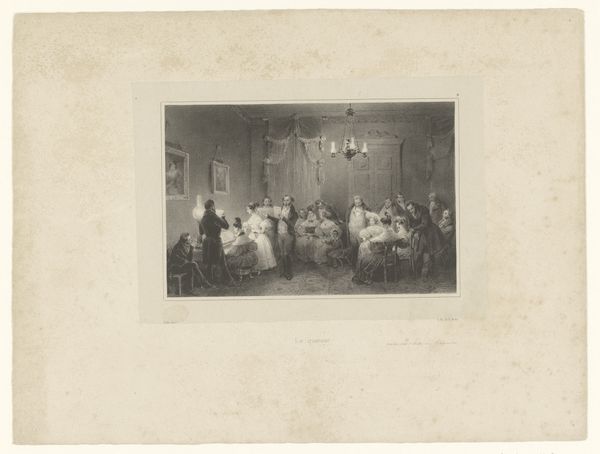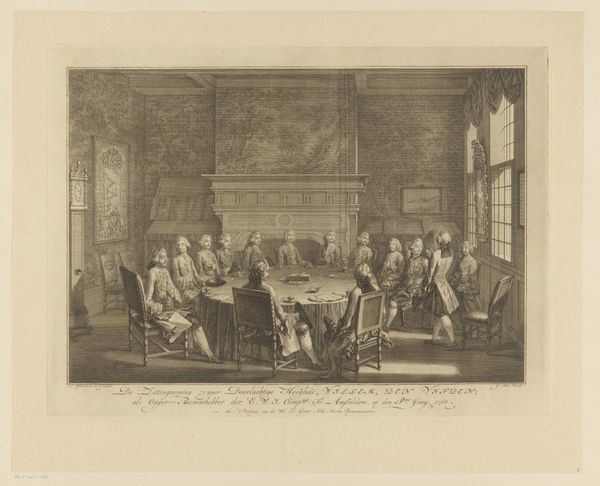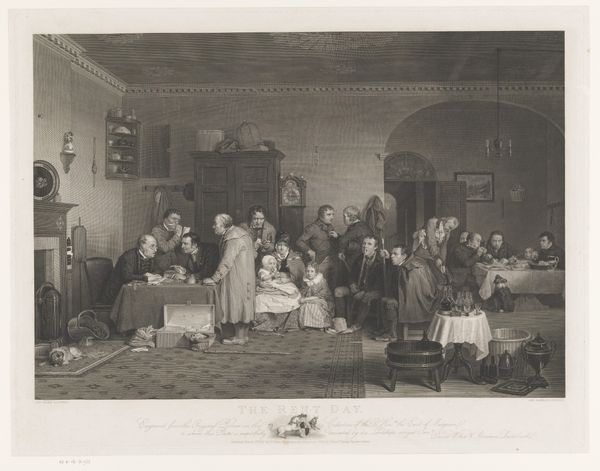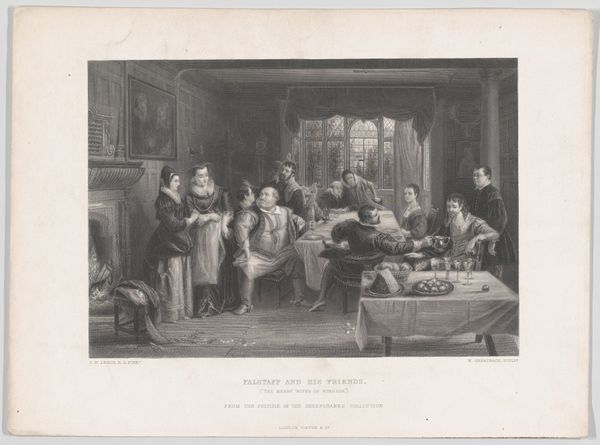
drawing
#
drawing
#
narrative-art
#
group-portraits
#
romanticism
#
genre-painting
Dimensions: height 115 mm, width 178 mm
Copyright: Rijks Museum: Open Domain
Curator: This is Jean-Baptiste Madou's "Company in an Interior Playing a Game," a drawing from 1833 currently held at the Rijksmuseum. My first impression is a sense of subdued theatricality, almost as though we're witnessing a tableau vivant frozen in time. The monochromatic tones lend an air of historical distance, yet the arrangement of the figures creates a palpable tension, inviting speculation on the nature of their interactions. Editor: Indeed, the composition feels intentionally staged. Considering this work emerged during the Romanticism movement, I find myself particularly drawn to the underlying social dynamics and performance of gender roles within this intimate space. Who has the power here, and how is it being displayed? Curator: That’s an excellent point. Social gatherings like these were crucial arenas for the performance of class and status. Notice how the lighting subtly focuses on certain individuals while obscuring others. The architectural features, too – the folding screen, the mantelpiece – all serve to reinforce the spatial and social hierarchies at play. The presence of a pet can often be seen as signifier of loyalty and domestic control. Editor: Absolutely, and it begs the question: what exactly *is* the game they're playing? Is it purely for amusement, or does it hold a deeper significance, perhaps masking underlying tensions or desires? We can also consider how notions of private versus public space were shifting during this era, with bourgeois homes becoming sites for both leisure and subtle negotiation of power. How do the costumes and accessories dictate gender expression? Curator: We might explore those interpretations, of course. As an artistic piece, it's striking how Madou employs relatively simple strokes to evoke complex emotions and narratives. It has a quality that anticipates later developments in narrative art. And also important is to reflect on who was historically allowed to create works such as this? Whose voices are we amplifying through artwork interpretation? Editor: Those are necessary questions to pose and investigate further in considering art in a public space, who the space is serving and centering, and whose needs are at the forefront of programming. The seemingly mundane setting opens onto broader questions about how identities are constructed, negotiated, and sometimes contested within seemingly harmless social rituals. Thank you, both of us, for investigating!
Comments
No comments
Be the first to comment and join the conversation on the ultimate creative platform.
